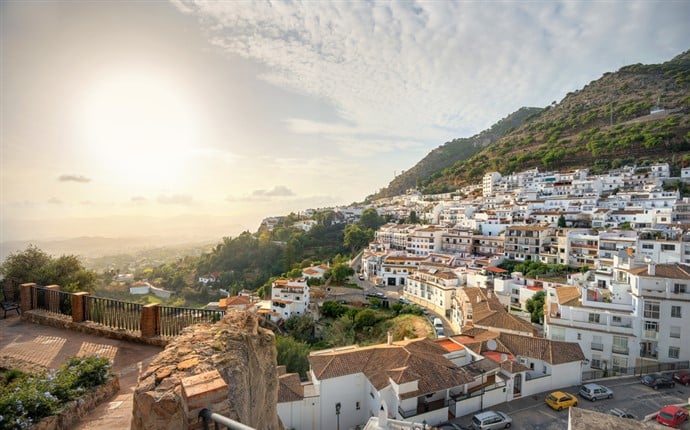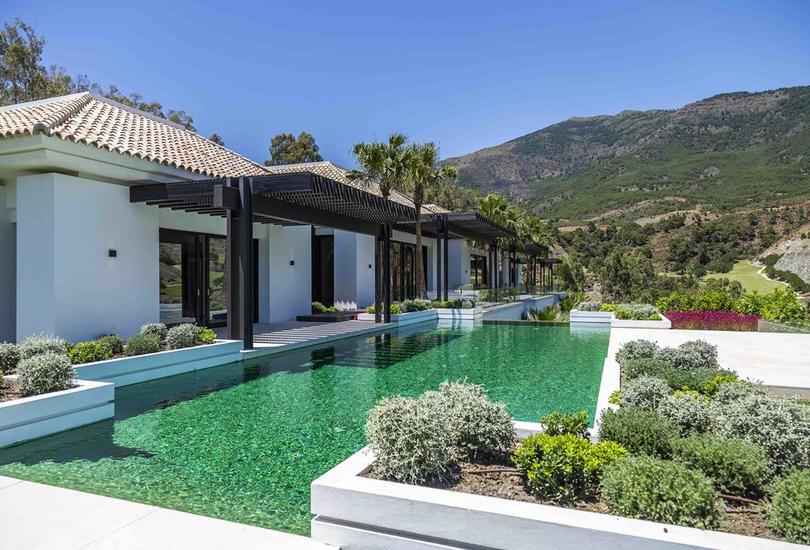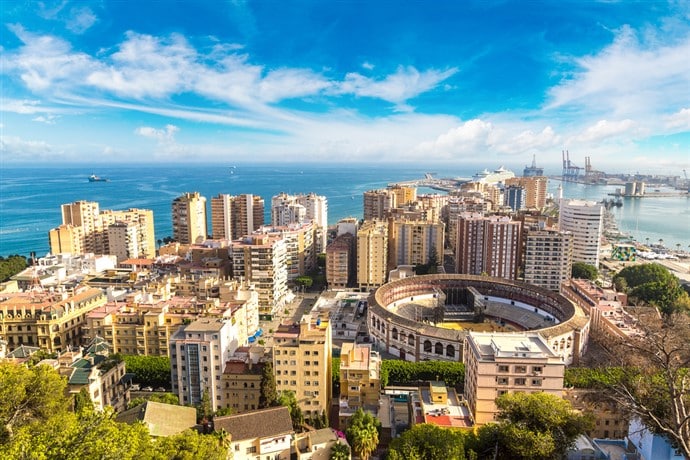Once a popular tourist destination full of gorgeous beaches, many wannabe expats now look at living on the Costa del Sol of Spain. And why not? This picturesque Andalusian haven offers much, which is evident in the large numbers of foreigners who already moved. As of 2020, just over 140,000 expats lived in Costa del Sol, scattered around various towns that cater for tourists. They chose this Costa for multiple reasons because as well as delivering traditional Andalusia vibes, the Costa del Sol is an all-rounder. We dare anyone to spend two months living there and to say they can not find the lifestyle they seek. With that in mind, let us look at what the Costa del Sol offers any expat considering the move.
Living on the Costa del Sol
1: Geography and Location
The name Costa del Sol translates into the coast of the sun, which is an accurate description of its long coastline fronting the Mediterranean Sea in southern Spain. Surrounded by Costa del la Luz and Costa Tropical, tourists and expats fly into Malaga airport 25 minutes away, although expats also use Gibraltar, Granada, and Jerez. Its location means it is a short flight from other countries, which is ideal for expats living here, should they want to nip back to see friends and family.
2: Sandy Beaches
We recommend heading away from sunbeds at swimming pools to enjoy the beachfront promenade lifestyle. Offering up a fantastic sea-view, the Costa del Sol boasts some of the best beaches in Spain. Maro beach in Nerja, Cabopina in Marbella, and Carvajal in Fuengirola, are the best. The 160 kilometres of coastline delivers 23 blue-flag beaches, and Nikki beach club in Marbella is the best place to hang out. As well as summers spent sunbathing, the seaside is all about ambience. The beach-front is a chill-out place for relaxation and socialising. Therefore, many expats buy an apartment or villa near the beach.
3: Gastronomy and Nightlife
Naturally, the Costa del Sol does tapas, sangria, and paella with style, but part of its popularity is that it is a hub of global cuisines and beverages. Bars and restaurants, cafes, and pubs all offer delicious food from your cheap to go takeaways to fine dining to steak, pasta, Mexican, Indian, sushi, Chinese and more. So naturally, sitting in the south of Spain, fried fish likes sardines and seafood is big business. Likewise, the nightlife scene is as cosy or as lively as you want. For the liveliest nightlife, head to Malaga, Torremolinos, Benalmadena, or Marbella. Otherwise, find a sit-down bar-restaurant offering live music in other towns.
4: Sailing and Golfing
Well-equipped golf courses and the long coastline make the Costa del Sol a haven for yachts and any expat looking to swing their golf club. In fact, for any golfer, it is one of the best places to retire to pursue hobbies and interest because there is a never-ending choice. Over 70 golf courses await players and if you play regularly, relocate somewhere near the best, which are the Valderrama course in Sotogrande or Finca Cortesin in Casares. Otherwise, anyone retiring can spend days on cruises to explore small towns, bays, coves, and upmarket marinas. So, get ready for a nautical lifestyle.
5: Things to Do
Anyone who retires to Costa del Sol has a mass of time on their hands, and this is perfect because there is much to do. Retirees should start with exploration to help them get to know their new home. Hire a car and hit the open road to explore small villages and small towns, or head to Spain’s most famous castle, the Moorish Alhambra Palace, one of the country’s top visited attractions. The Sierra Nevada Mountain range is the Costa del Sol skiing hotspot, while a great day trip excursion is quaint Almeria, which is famous for its cathedral. Marbella throws up numerous attractions and monuments, including the Picasso Museum. Aside from that, other day trips prove the Costa del Sol is just one big playground.
6: Municipalities and Where to Live
The Costa del Sol breaks down into nine official districts which are Manilva, Casares, Estepona, Benahavis, Marbella, Fuengirola, Mijas Costa, Benalmadena, Torremolinos. Altogether these present many suburbs, towns, villages, and places to live. Malaga is the Costa del Sol’s capital, but other popular places include Estepona and Mijas Costa. Anyone who wants a place to live that offers luxury vibes and property should head to the golden mile in Puerto Banus. It is one of the most prestigious places in Spain. Read our article about expat destinations in Costa del Sol to find out what the most popular offer. Most significant places already have large expat communities, which are a great source of local information, and help everyone quickly settle in.
7: Real Estate in Costa Del Sol
The Costa del sol property market benefits anyone looking to live in Spain. A vast choice of whitewashed cottages, luxury villas, townhouses and apartments present the perfect place to live here all year round. To start your property search, browse our portfolio. Each listing contains everything to know, like status as a villa or apartment, home features like balcony, terraces, jacuzzi, or furnished, and location details like walking distance to supermarkets and buses. Also, use the contact details to find out more via email or arrange a viewing. Our article about the Costa del Sol is helpful for anyone who wants to move and live here permanently.
8: Need to Know: About Malaga
The Costa del Sol of Spain is a large area of which a central hub is Malaga. The city centre comprising roughly half a million residents, hosts travellers eager to see the cultural heritage attractions like the old city. The city is famous for its festivals like the Malaga Fair, Noche en Blanco (the Night in White), and Semana Santa, aka the Holy Week. The transport network from Malaga is extensive. Not only does it host one of Spain’s major touristic air travel hubs, but the fast train to Madrid takes just over two and a half hours.
9: Is English widely Spoken in the Costa del Sol?
Some expats contemplating a move to the Costa del Sol worry about the language barrier. In other places in Spain, knowing Spanish is essential to daily living, but the situation differs in the Costa del Sol. Its tourism industry stretches back nearly 70 years; hence generations of locals learnt foreign languages. As a result, English is widely spoken throughout the region. However, we recommend trying to learn at least one word a day. This helps you make friends with the locals, boosts self-esteem and enhances day-to-day living.
Also of Interest
Moving to Spain: International living is a significant lifestyle change. As well as looking for the best place to live, expats need to adapt to another culture, routine, and general society’s way of doing things. This article gives wannabe expats tips and advice on how to make your move to Spain run smoothly and how to prepare for moments when it goes wrong.
About Us: We are Spot Blue international property, and we help foreigners buy a holiday home or place to live permanently in Spain. We hope we answered any questions expats have about living on the Costa del Sol of Spain, but if you want to buy a property and talk to a local agent, call us today. Also, see our blog about Spain for more articles on places and expat life in the Costa del Sol.


